The EU-US Trade Agreement - Is It the Agreement of the 21st Century?
Zhaneta Kuyumdzhieva, March 11, 2013
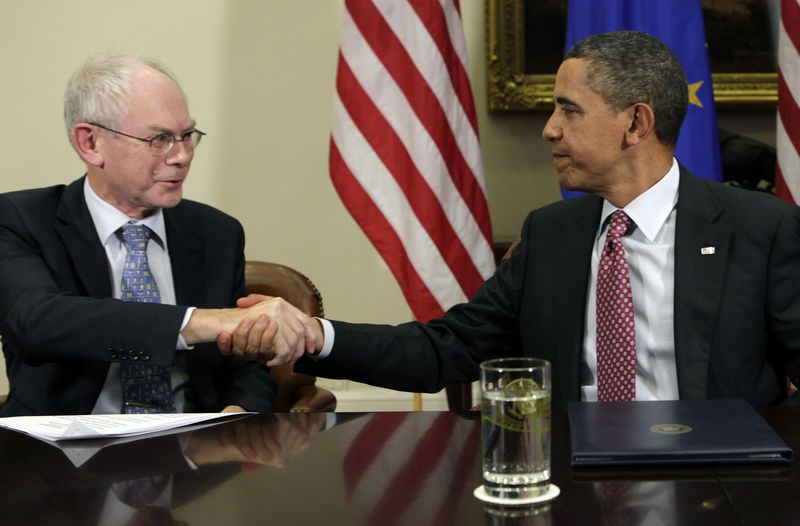 The beginning that was put last month of the negotiations on an agreement for free trade between the United States and the European Union, which some press centres and media defined as the 'agreement of the 21st century', came with an ambition the relations between the two economic giants to reach a "higher level". Such a movement forward in the trade partnership between Brussels and Washington, against the backdrop of the huge potential - namely 47% of global GDP - seemed strongly desired rather by the EU and the business from the two sides of the Atlantic, then by the US political elite.
The beginning that was put last month of the negotiations on an agreement for free trade between the United States and the European Union, which some press centres and media defined as the 'agreement of the 21st century', came with an ambition the relations between the two economic giants to reach a "higher level". Such a movement forward in the trade partnership between Brussels and Washington, against the backdrop of the huge potential - namely 47% of global GDP - seemed strongly desired rather by the EU and the business from the two sides of the Atlantic, then by the US political elite.
The green light in the negotiations came after a series of obstacles before the deepening of trade relations: the crash of the negotiations in the Doha Round, the economic crisis and the weak interest Barack Obama showed in Europe in his first term as president. In the meantime, the EU succeeded to negotiate a free trade agreement with Singapore in December 2012 and to lay the foundations for beginning of negotiations with Japan in April 2013. There already is a comprehensive trade agreement with South Korea too. Probably because of the perspective the signature of such a type of agreement very soon with Canada and the efforts of the established in November 2011 special working group on employment and growth, led by US trade representative Ron Kirk and European Trade Commissioner Karel De Gucht, which aimed to return on the agenda the initiative for trade liberalisation, in the end of last year appeared a strong expectation that there will be a change of Washington's attitude toward Brussels.
After the deadlock and the changes of the economic status quo that the crisis imposed, this will be the first act of an actual upgrade of the projects that are already under way for liberalisation of transatlantic trade between EU and US: the Transatlantic declaration, the Transatlantic Economic Partnership and the Transatlantic Economic Council - a structure which works to unleash the potential of the trade links between the two continents. With the conclusion of an ambitious and comprehensive agreement it is expected by 2027 the economic growth of the EU to increase by 0.5% and that of US - by 0.4%. This means an additional revenue of 86 billion euros for Europe and for our western partner the expected benefit is estimated at 65 billion euros.
According to the working group, the effect of the agreement will require technical time because it suggests a gradual elimination of trade and investment barriers as in the meantime mechanisms will be applied aimed at deepening the economic integration in terms of approaches for the current and the future regulation, standardisation and other methods of reduction of trade barriers different than tariffs.
Although the tariffs will not be the main issue to be solved by the agreement, one of its objectives is to achieve the maximum possible removal of customs tariffs for transatlantic trade in the industrial and agricultural products because currently the average tariff for EU exports in the EU is 5.2% and Washington's to Brussels is 3.5% which creates significant costs for the two economies. Improving the market access - one of the strategic goals of the future agreement - envisages also work on the conditions to provide services, investment protection and more opportunities for public procurement.
The establishment of an integrated transatlantic market is a task which is of great necessity. It is related to standardisation of traded goods. There have been barriers for a long time that hamper trade because of the different systems of safety certification, consumer protection, health requirements and standards related to environment. Examples in this respect are the barriers for some foods, cars, heavy customs procedures (mainly in the US after 9/11). In order for a product to be exported often it has to go through certifying its suitability procedures as in Europe so on the other side of the Ocean, which costs time, money for companies and losses for the economies.
The efforts in this area will be directed at mutual recognition of standardisation of European and American goods and achieving an ambitious agreement for health and sanitary requirements in foods, for instance. In addition, it is expected the regulatory frameworks of the two sides to be brought in line in the area of chemical, auto and pharmaceutical industries.
Probably the third strategic goal of the EU and US is what gave grounds to the European Commission to describe the document in its press release as "the agreement of the 21st century". Ambitions here are related to facing contemporary global challenges and the areas in which the joint working group recommends bilateral agreements cover:
- Facilitating trade by reforms of customs;
- Competition;
- Policy toward state-owned enterprises and the rights they have;
- Localisation of barriers;
- Restrictions for the export of raw materials;
- Policy toward small and medium-sized enterprises;
- Transparency in trade;
- Localisation of trade barriers - measures created for protection, in support or to boost local industries, suppliers, intellectual property, etc.
According to Philip Whyte, senior research fellow with the Centre for European Reform, a London based think-tank, for such an ambitious agreement to be successful it has to be prepared and implemented with a certain dose of modesty. The author recommends in his analysis "Freeing the transatlantic economy – prospects, benefits and pitfalls" the two sides to commit to reducing tariffs first and only then to move ahead to changes related to the barriers in standardisation and regulation. According to him, "a successful transatlantic trade and investment partnership would make steps towards a 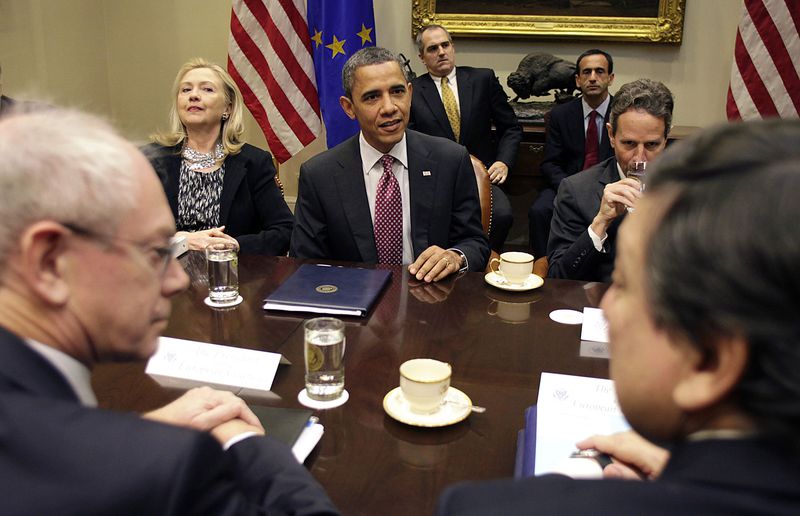 free trade area (by reducing, but not eliminating, tariffs), and modest ones towards a single market (perhaps by delivering some mutual recognition of regulations, reaching some agreements on common technical standards, and by improving market access in services)".
free trade area (by reducing, but not eliminating, tariffs), and modest ones towards a single market (perhaps by delivering some mutual recognition of regulations, reaching some agreements on common technical standards, and by improving market access in services)".
At their joint news conference on February 13th, US President Barack Obama, European Council President Herman Van Rompuy and Jose Manuel Barroso, the European Commission chief, stated that "through these negotiations the US and the EU will have the opportunity not only to expand trade and investments across the Ocean, but also to contribute to the development of global rules that enhance the international trade system". This brings the ambition for a stronger transatlantic union. But some sensed here rather an alarming signal for third parties because the liberalisation of trade between US and EU will automatically discriminate other interested parties and instead of creating new trade flows it will cause re-direction of the existing ones. That is why, a number of analysts, but the Ministry of Economy in Berlin too, believe that such an agreement has to provide an opportunity third countries to join in.
The Commission is expected to present to the Council its ideas for the negotiations in the form of directives. The Council has a deadline to give an opinion in the second half of March. US, for its part, will send a notification to Congress, thus marking the beginning of a 90-day period of postponement. After the agreement is agreed it will have to be approved by all EU member states, the European Parliament and the US legislature.
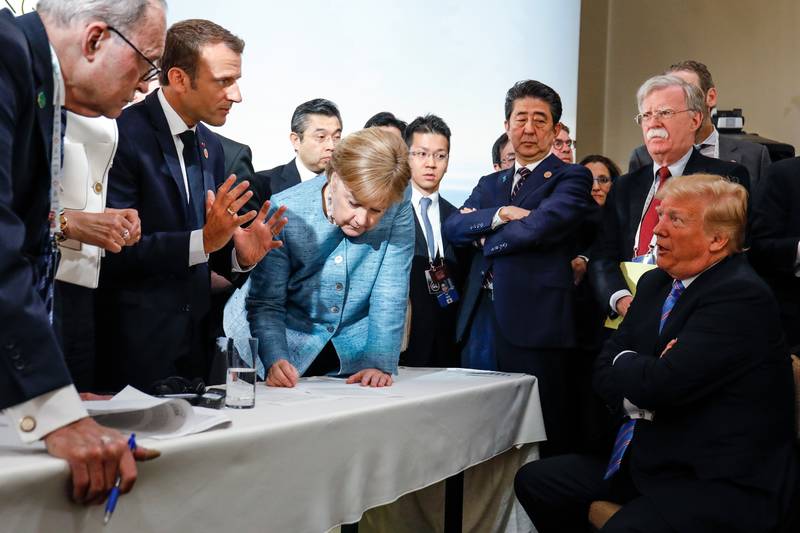 Macron, Merkel, Abe, Trump | © Council of the EU
Macron, Merkel, Abe, Trump | © Council of the EU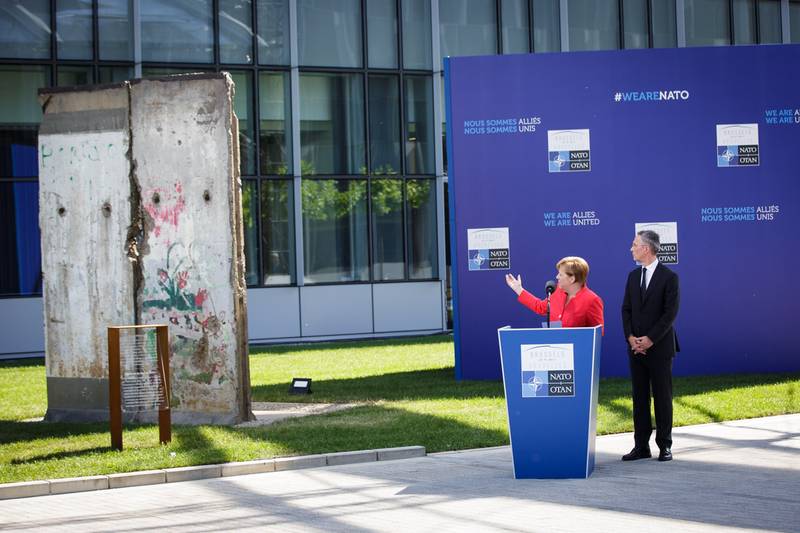 Angela Merkel | © Bundesregierung
Angela Merkel | © Bundesregierung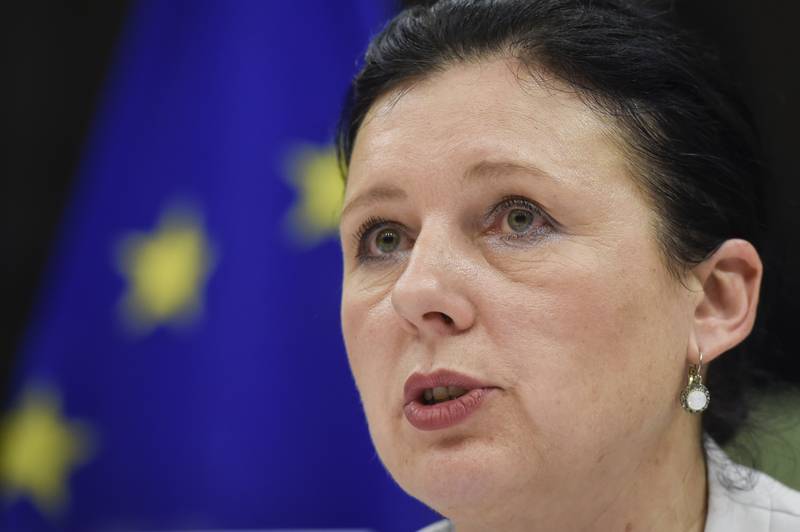 Vera Jourova | © European Parliament
Vera Jourova | © European Parliament